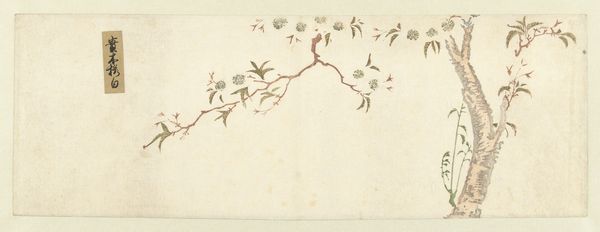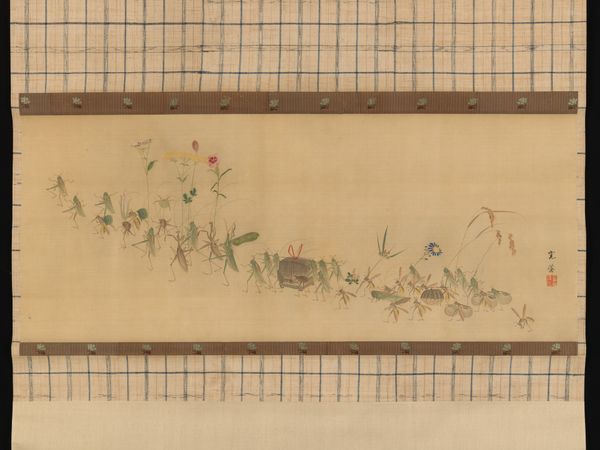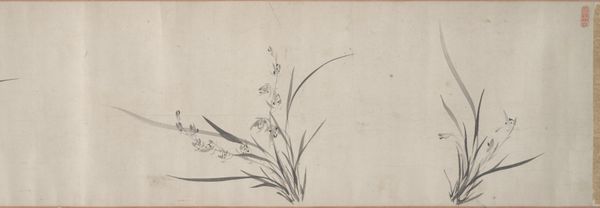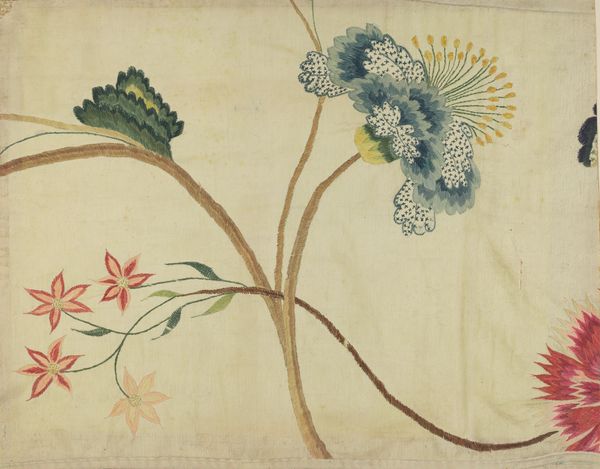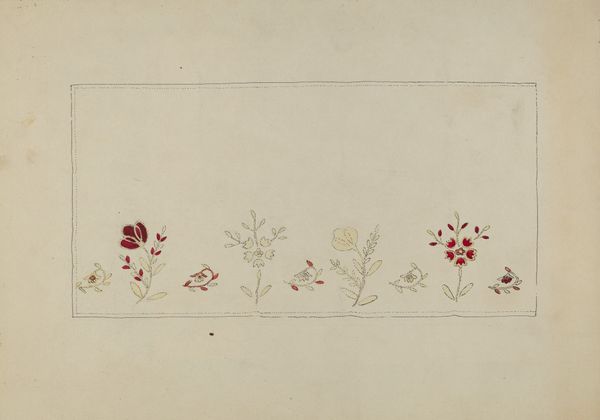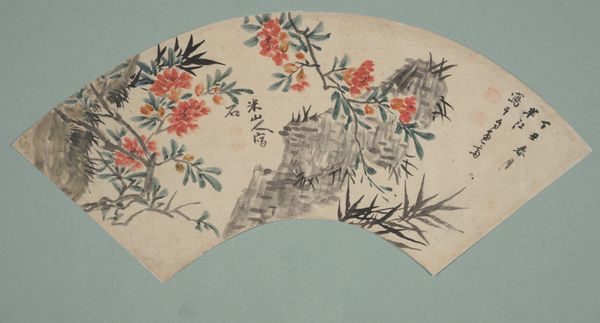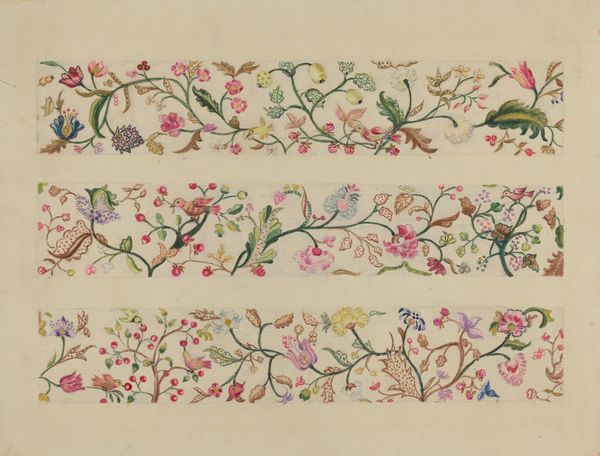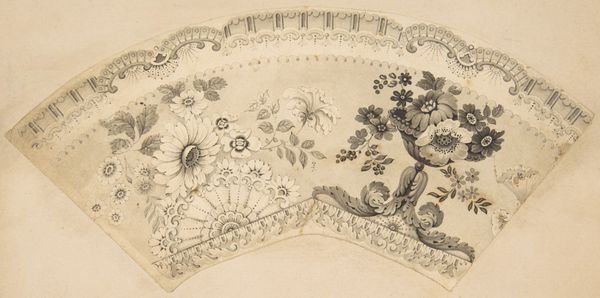
Ontwerp voor de beschildering van de rand van een schotel of de wand van een eierdop, beker of kop c. 1875 - 1890
0:00
0:00
drawing, paper, ink
#
drawing
#
water colours
#
paper
#
ink
#
japonisme
Dimensions: height 60 mm, width 272 mm
Copyright: Rijks Museum: Open Domain
Eugène Louis Millet made this design for painting the rim of a plate, or the wall of an egg cup, beaker or cup, in nineteenth-century France. Millet’s delicate watercolor shows flowers and insects in a style that was then called Japonisme. After 1860, Japanese art and design became increasingly popular in Europe, as Japan opened itself to Western trade, and Japanese objects began to circulate at international exhibitions and in import shops. European artists drew inspiration from Japanese prints, textiles, and ceramics. Millet and other artists adopted a Japanese aesthetic that celebrated the natural world, flattened perspective, and embraced asymmetry. Millet was one of many artists and designers who were swept up in the fashion for Japonisme. To understand this image, we can look at the history of international trade, the development of museum collections, and the writings of art critics. This artwork reminds us that artistic styles are shaped by social and institutional forces.
Comments
No comments
Be the first to comment and join the conversation on the ultimate creative platform.
